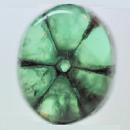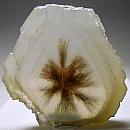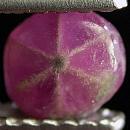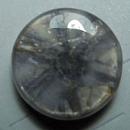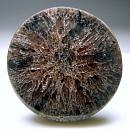|
|
||||||||||||||||
|
||||||||||||||||
|
||||||
|
|
Trapiche Gems |
| |
|
| |||
|
|
|
Trapiche Emeralds Trapiche is pronounced trah-pee-chee with the accent on the second syllable. Trapiche is the Spanish word for a spoked wheel used to grind sugar cane. This spoked wheel bears a striking resemblance to the pattern in the very rare "Trapiche Emeralds". With regards to gems, the term "trapiche" was originally applied only to this distinct pattern in Emeralds and much later applied to similar patterns in Rubies, Sapphires, Quartz and, very rarely, Tourmaline. The earliest reference to Trapiche Emeralds was in an 1879 French mineralogical bulletin. Trapiche Emeralds are found only in Colombia at Coscuez, La Peņa and the famous Muzo mining district. Trapiche Emeralds are possibly the rarest of "pattern" gems. Their six spoke-like carbon "rays" emanating from a hexagonal center with the areas in between filled with emerald green makes this a unique and unforgetable gem. Gemological examination shows that the trapiche is a single crystal not a twinned specimen as once thought. Trapiche Sapphire, Spinel and Ruby A relatively new type of "trapiche" gem has been found in Mogok, Burma. These new gems are Trapiche Rubies, Sapphires and Spinels. Like Trapiche Emeralds, these gems feature a stationary six "spoke" pattern radiating out from the center of the gem. This pattern is not asterism as in the more common star Rubies and Sapphires. Unlike Trapiche Emeralds, the Trapiche Rubies and Sapphires often have white "spokes" instead of the black carbon spokes of the Trapiche Emeralds. Trapiche Rubies can vary in color from pale pink to a darker reddish pink with well defined whitish spokes. Most Trapiche Sapphires are found in light to dark shades of gray with less defined spokes. Very few Trapiche Sapphires have a distinct vivid blue and white pattern. Trapiche Rubies and Sapphires are considered very rare collectors items. Finer pieces are quickly reaching Trapiche Emerald price ranges.
|
|
|
|
|
|
|
|
|
||||
|
|
|
|
|
|
|
||||
| Emerald Trapiche |
|
Quartz (psuedo) Trapiche |
|
Ruby Trapiche |
|
Sapphire Trapiche | ||||
|
|
|
|
|
|
|
|
||||
|
|
|
|
|
|
|
||||
| Spinel Trapiche |
|
|
|
|
|
|
||||
|
|
|
|
|
|
|
|
|
We
have not photographed our Trapiche gems
yet. Please
check back soon. |
